You’ve worked hard to prepare the soil, find some beautiful turf and lay a new lawn. What next? How should you care for your new turf whilst it establishes itself in your garden?
Watering new turf
The most important thing you can do at this stage is watering. If your turf dries out it will shrink and probably even die.
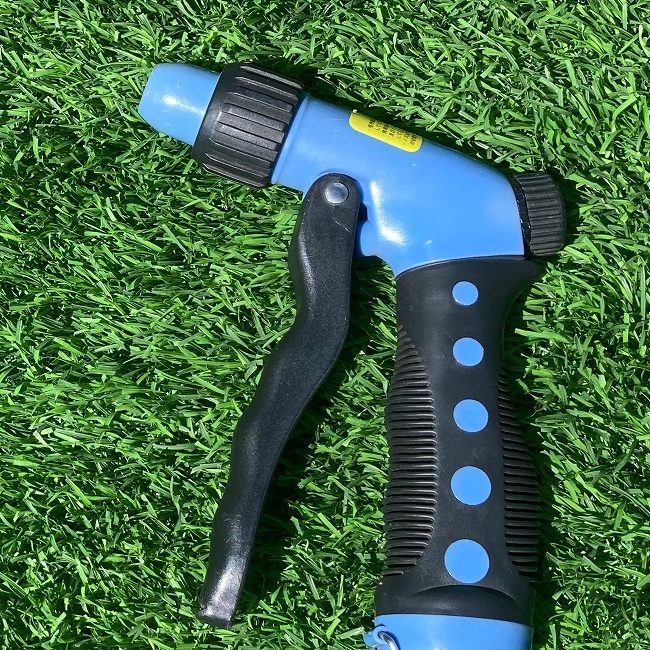
Hopefully you will have watered your new lawn thoroughly as soon as you finished laying the turf. Did you lift up one of the turves to make sure the water had soaked through into the soil below? Good.
For the next two weeks, you need to keep up the good work on a daily basis. Water your lawn every evening. Mornings too if the weather is very hot.
How much water should I put on?
After a few days you’ll get a feel for how much water to put on. It’s vital that the water sinks through the turf and into the soil, but you don’t need to put on so much that the ground becomes soggy and boggy.
Conversely, if you don’t put enough water on, it won’t sink deep into the soil and the roots will have no reason to grow downwards to find it.
How many weeks do I need to water my new turf for?
On average, you will need to water daily for the first 10-14 days. Once the roots are starting to bed in and you can no-longer lift the turves, you can water on alternate days for the next week or so. After that, provided the weather isn’t continually hot and dry, it will be OK to stop watering.
Keep an eye on the grass though. If it starts to wilt, start watering again. Very young turf needs plenty of help, especially if it’s laid onto sandy or free-draining soil.
Mowing your new turf for the first time
Lawn expert David Hedges-Gower maintains that the mowing regime can make or break a lawn. And I’m inclined to agree with him.
Scalping a young lawn will weaken the plants so that they never really thrive. Allowing the grass to grow tall and then chopping it right down is also pretty stressful for the plants. The key to good mowing is little and often.
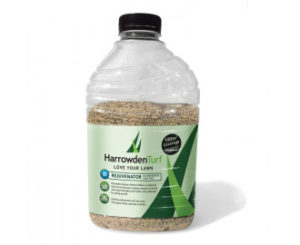 |
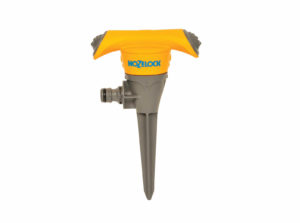 |
|
 |
 |
 |
When to mow your new lawn
Once the turf has bedded in it’s a good idea to start gently with your mowing regime. For most lawns you can mow after 10-14 days. In winter time, the bedding-in may take a little longer.
Choose a dry day and make sure your mower blades are clean and sharp. Blunt blades will rip at the grass leaving jagged edges. Sharp blades make a clean cut that heals quickly.
Set the mower blades and their highest setting and put the grass box on….now you’re good to go!
I like to mow up and down the lawn first, then make a second pass, this time mowing from side to side That way any blades of grass that get missed in the first pass will be taken off second time around.
Never cut off more than 1/3 of the grass length. And if your lawn was made from a ryegrass (hardwearing) turf, or from a shade tolerant turf, try not to cut it any shorter than about 2.5 cm.
Feeding your new lawn
If you used a pre-turfing fertiliser in your soil preparation, you won’t need to apply any more feed for at least 6 weeks.
No pre-turfing fertiliser? Apply the first feed after 3 weeks – or as soon as the turf is bedded in firmly.
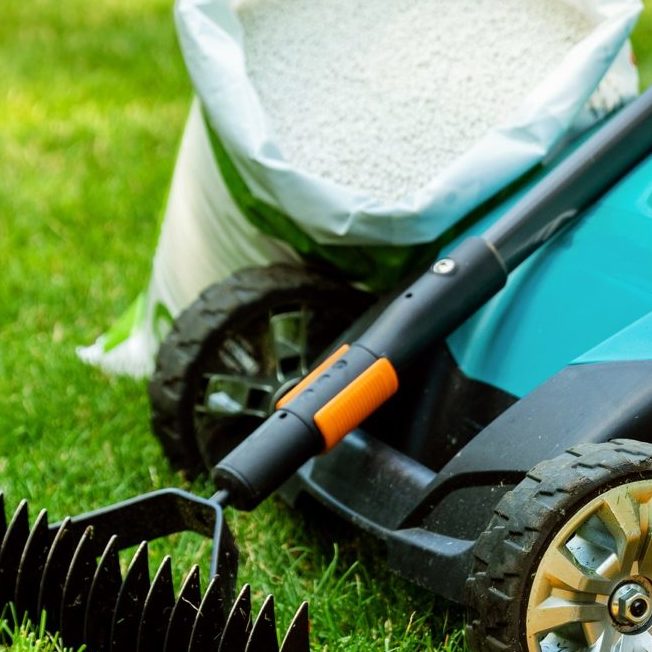
Choose the right lawn feed for the time of year and follow the manufacturers instructions to the letter.
Weeding
I’d like to think that there’d be no need for weeding in the first few months. But sometimes, just sometimes, the odd dock leaf will sneak through from under the turf.
Docks won’t disappear with mowing. You do need to treat them. I find that digging them out, no matter how eco-friendly it might sound, doesn’t actually work. They’re so deep rooted that the blighters grow straight back again. Much as I hate chemicals, in this case I will recommend spot-treating with glyphosate (Roundup) gel. It’s available in garden centres and provided you follow the manufacturers instructions for storing and using it, is perfectly safe.
Troubleshooting on a new lawn
You may see mushrooms or toadstools in your new lawn – this is perfectly normal and nothing to worry about.
Newly turfed lawns can also be vulnerable to attack by common lawn diseases. This tends to happen more in autumn time so just be vigilant. If you spot anything unusual take a photo and send it to your turf suppler. They’ll be happy to help you diagnose the problem and they’ll also offer advice on how to treat it.
You may also like…
Save
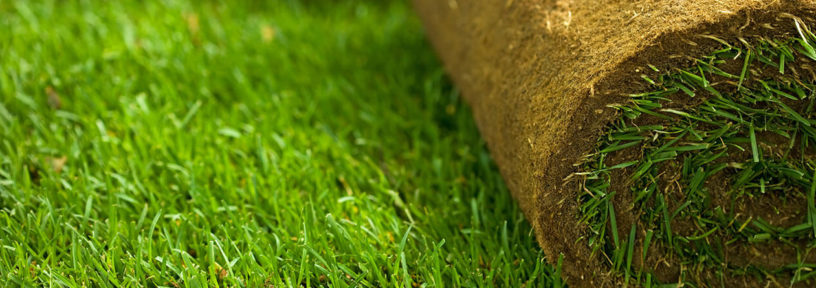
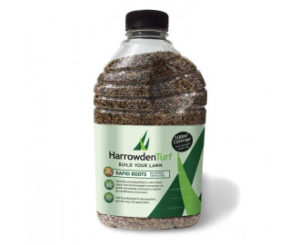
 How to care for your new lawn
How to care for your new lawn 


Comments are closed.